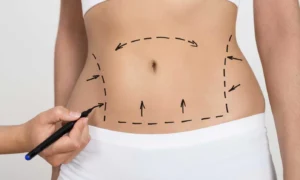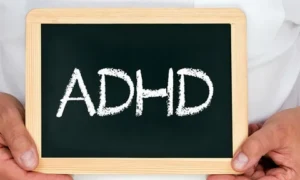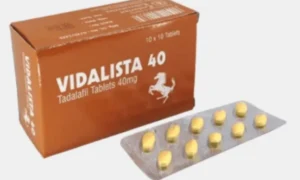Needlestick injuries are a serious occupational hazard for health care workers, especially those who handle or dispose of sharps such as needles, syringes, scalpels, and lancets. According to the World Health Organization, more than 3 million health care workers are exposed to bloodborne pathogens through needlestick injuries each year, putting them at risk of infections such as hepatitis B, hepatitis C, and HIV.
To prevent needlestick injuries and protect the health and safety of health care workers, it is essential to follow some best practices for handling and disposing of sharps. Here are some tips to help you guard against accidental needlesticks:
- Use safety-engineered devices whenever possible. These are devices that have built-in features to prevent or minimize the exposure to the sharp point or blade after use. For example, some needles have retractable tips, shields, or caps that cover the needle after use. Some syringes have self-blunting or self-sheathing needles that reduce the risk of injury. Always activate the safety feature as soon as you finish using the device and before you dispose of it.
- Do not recap, bend, break, or reuse needles. These actions can increase the chance of injuring yourself or others with a contaminated needle. If you need to recap a needle for a specific reason, such as transporting a specimen, use a one-handed technique or a recapping device to avoid touching the needle with your fingers.
- Dispose of sharps in puncture-resistant containers. Sharps containers should be clearly labeled, easily accessible, and located as close as possible to where sharps are used. Do not overfill the containers or force sharps into them. When the container is three-quarters full, seal it and dispose of it according to your facility’s policy and local regulations.
- Wear appropriate personal protective equipment (PPE). Depending on the type of procedure and the level of exposure risk, you may need to wear gloves, gowns, masks, eye protection, or face shields when handling sharps. PPE can help prevent contact with blood or other potentially infectious materials in case of a needlestick injury.
- Report any needlestick injury immediately. If you suffer a needlestick injury, wash the affected area with soap and water and seek medical attention as soon as possible. Follow your facility’s protocol for reporting and documenting the incident and receiving post-exposure prophylaxis (PEP) if needed. PEP is a course of medication that can reduce the risk of infection after exposure to bloodborne pathogens.
- Follow standard precautions at all times. This means treating all blood and body fluids as potentially infectious and wearing appropriate personal protective equipment (PPE), such as gloves, gowns, masks, and eye protection. PPE should be changed between patients and removed before leaving the work area.
- Avoid recapping or bending needles. This can increase the risk of needlestick injuries by creating sharp edges or exposing the needle tip. If recapping is necessary, use a one-handed technique or a recapping device that does not require manual manipulation of the needle.
- Dispose of used needles and sharps immediately after use. Do not leave them on surfaces, in trays, or in pockets. Use puncture-resistant sharps containers that are clearly labeled and located close to the point of use. Do not overfill or force items into sharps containers. Close and seal sharps containers when they are three-quarters full or according to the facility’s policy.
BEST PRACTICES FOR SAFETY IN NEEDLESTICK INJURIES
Needlestick injuries are a serious occupational hazard for health care workers, especially those who handle blood or other potentially infectious materials. Needlestick injuries can expose workers to bloodborne pathogens, such as hepatitis B, hepatitis C, and HIV, and cause infections, diseases, or even death. Therefore, it is essential to follow best practices for safety in needlestick injuries, both to prevent them from occurring and to manage them effectively if they do occur.
By following these best practices for safety in needlestick injuries, health care workers can protect themselves and their patients from the risks of bloodborne infections and ensure a safe and healthy work environment
However, needlestick injuries are not only a concern for health care workers. People who use needles or sharps at home for medical reasons, such as diabetes, allergies, or arthritis, also need to dispose of them safely to prevent harm to themselves or others. Sharps include needles, syringes, lancets, and clippers.
The best way to dispose of sharps safely at home is to use a sharps disposal container. This is a specially designed box with a lid that you can get on prescription from a GP or pharmacist . When full, the box may be collected for disposal by your local council or a mail-back program. Alternatively, you may be able to drop off your sharps disposal container at appropriate chosen collection sites, such as doctors’ offices, hospitals, pharmacies, health departments, medical waste facilities, and police or fire stations .
To use your sharps disposal container correctly, follow these steps :
- Place the container near where you use medical sharps, so you don’t need to carry a used sharp across your home for disposal.
- Keep the container out of reach of children and pets.
- Always wash hands after touching or handling medical sharps.
- Do not overfill the container. When it’s more than half full, stop using it.
- Put needles or similar medical supplies into the sharps bin immediately after using them and do not try to take them out again.
- Only fill the bin to where it says “Do not fill above this line”.
- Do not reuse sharps disposal containers.
- Wrap the lid with strong tape and label the container “Home Medical Sharps – Not for Recycling”.
- Dispose of used sharps disposal containers according to your community guidelines.
Do not put used needles or other sharps in:
- any type of household bin (for example, a general rubbish bin or a recycling bin)
- a container that’s no longer needed, such as a drinks can or bottle public litter bins
Needles can cause injuries. Used needles can carry blood-borne viruses that may be passed on to other people. Viruses that can be passed on through contact with needles include:
- HIV
- hepatitis B
- hepatitis C
By following these best practices for safety in needlestick injuries at home, you can protect yourself and others from the risks of bloodborne infections and ensure a safe and clean environment.
















